Author: Dr. Yohana David Laiser, MD Medical Doctor | Space Exploration Enthusiast | Aspiring Public Health Specialist The government of Tanzania has set itself a goal to venture into space exploration by launching its first ever Communication Satellite, scheduled for the end of 2023 following similar endeavors by other countries in the region. This daring spirit shown by the government is also reflected by a rising number of space-related activities, establishment of privately owned companies venturing into space exploration, and a germinating stalk of space ecosystem in Tanzania, most notably in the country’s commercial city of Dar es Salaam.
One of record-breaking events to ever happen in Tanzania is the NASA International Space Apps Challenge, which is the largest global hackathon organised by the National Aeronautics and Space Administration (NASA) in the United States of America and partner organisations from all over the world, such as ESA, CSA, JAXA, ISRO and many more.
InnovaSpace congratulates the hard work and dedication of Space System Engineer Marco Romero and Daniela Barbosa and their team of helpers, who dedicate their own time and resources to promoting science & technology initiatives in Angola and beyond. Well done all on your latest activity to inspire the future space generation! The Thematic Week to Celebrate Rural and Urban Development and looking at the contribution of the Education sector to sustainable development, saw the launch of 10 Editions of Space Science and Technology Comic Books, produced in Angola. “Ruvi Humbi” illustrates the life of a girl born and raised in a village in southern Angola. She dreams of reaching the stars but a conflict between the cultural and empirical knowledge of her friend Humbi and the scientific knowledge of her physics teacher makes it difficult to realize her dream of exploring the universe. “Xiamy” recounts the story of two boys who are invited to travel back in time to use the knowledge they acquired in physics and maths classes to help Punguandongo elders improve space surveillance and planetary defense techniques. “Katutu – The Space Engineer” - Young Katutu is a dreamer who goes through the phases of discovering his profession. His regular routine of life as a student and homework is interspersed with dreams in which Katutu discovers a robot with whom he learns what it is like to be a Space Systems Engineer and how he can contribute to space science and technology that changes the world. “Tropa dos Kandengues” - A group of young scientists go on a study trip to the Namibe desert, imagining its dry red landscape to be like a trip to the red planet Mars, and they apply all their knowledge acquired in classes on human and robotic exploration of the Solar System. The comic books were pre-released on November 6th, 2021 to children, educators, investors and other members of the educational system, with the ultimate aim of receiving feedback, support and contributing to the Educational community around the world. Can you help support their work in some way? Drop us a line and we can connect you! Ruvimbo SamangaSpace Law & Policy Analyst 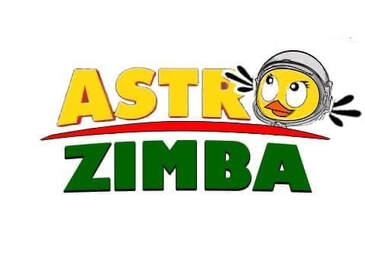 On the 2nd of October 2020, the Astro Zimba space education curriculum for young children began its programme, launching a pilot study with the Whitestone School, in Bulawayo, Zimbabwe. This space education curriculum recognises that building Zimbabwe’s space autonomy is hinged on the nation’s capacity to make a critical mass of skilled individuals. This capacity-building must necessarily begin from the early developmental stages. The Astro Zimba curriculum, created by myself and Marco Romero, in collaboration with InnovaSpace and Students for Exploration & Development of Space (Zimbabwe), is a series of lectures on space and space-related themes, using interactive sessions, games, videos, comic books and other learning activities to spark space science and technology curiosity amongst the youth. This is done in the hopes that more children, especially young girls, will be inspired to take up STEM subjects and careers. The founders of this programme identified a gap in existing curricula, one which they wish had been filled during their initial years, and one which they believe has a profound impact on the development of the space industry. 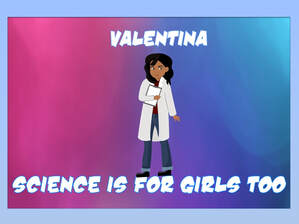 Space sciences and technology, while a rapidly developing and exciting field, can often be quite a technical subject area for young children to understand. That said, having a dedicated programme which delivers science content in an engaging, tailored and fun way helps to boost interest in young children. It has the dual effect of inspiring both genders to become involved, which is the goal of the Valentina project for girls, facilitated by InnovaSpace, acknowledging that young girls are underrepresented in the STEM sciences. Giving access to quality education boosts social and economic circumstances, alleviates poverty and empowers young girls, positively impacting on the SDG 1 (poverty reduction), SDG4 (quality education) and SDG5 (gender equality). The following lesson plans were presented during the pilot study. The introductory video sought to spark the learner’s curiosity and inspire more children to pursue careers in the space industry. Having careers in the space industry, the Founders thought it important to add a touch of personal experience and insights, including initiatives that have made a difference in their personal career journeys. The learners are introduced to each week’s theme through an interactive video message, before proceeding with practical in-person class sessions. Tafadzwa BangaNational Point of Contact, Space Generation Advisory Council - Zimbabwe 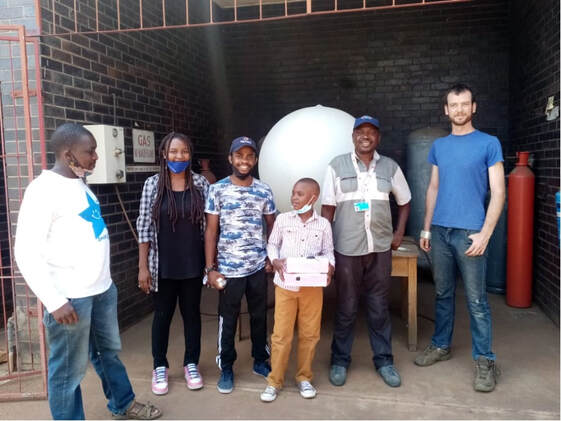 High Altitude Balloon Discover Mission (HABDM) is the first space student-led project that has been done in Zimbabwe. The project was a collaborative engagement project between students from the Students for the Exploration and Development of Space Zimbabwe (SEDS Zimbabwe) and the Meteorological Service Department (MSD) of Zimbabwe. The purpose of this mission was to spearhead space education in Zimbabwe and ensure that students are aware of the opportunities that space has. Our primary goal was to record the flight to the stratosphere and use that footage for educational purpose as well as celebrating the World Space Week. Prior to the launch date we decided that we would send our payload together a radiosonde from the MSD so that we could compare the atmospheric information obtained. 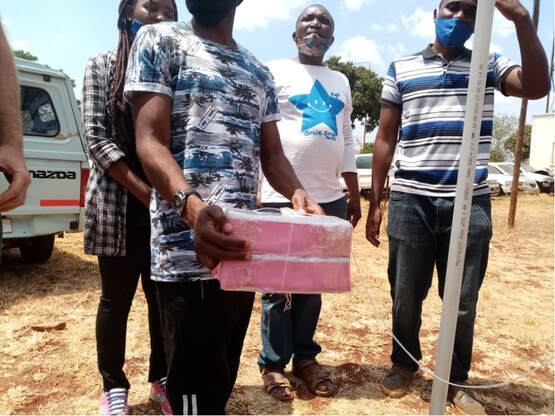 To add to the mission, we covered the capsule pink acknowledging that the month of October is the month for breast cancer awareness. It only took us three days to have all the equipment for the payload. Despite the risks involved and the probability of failing to recover our instruments was high because we did not have enough time to prepare. We had seen videos of well-prepared teams who had done high altitude projects facing some challenges in recovering their payloads when they were using state of the art equipment. So in our case to avoid too much disappointment we had to lower our expectation and accept any outcome. On the 10th of October the whole team met at the MSD offices and without wasting time the balloon was launched. We were graced by the presence of the Deputy Director of MSD Zimbabwe, Mr Mazhara. Unfortunately on the launch the weight of the payload posed a huge challenge. We ended up removing the radiosonde to ensure that the balloon ascended to the stratosphere. Our payload consisted of two cameras, mobile device, usb adapter, power bank and a data logging system. The team consisted of students from University of Zimbabwe and National University of Science and Technology Zimbabwe, with the assistance from Claire a geography teacher at St John’s College in Harare and William, a self-employed space enthusiast. It was through the collaborative effort of the team that we were able to have all the resources that were needed for the launch. The MSD came through for us by providing us with the balloon and hydrogen gas. This week InnovaSpace is highlighting the great work taking place in Angola by the Academy of Kandengue Scientists, with a blog written by Mentor of the project Pedro Paris and Aeronautical Engineer Marco Romero. We thank the Academy for the contribution of their students to our Kids2Mars project - and for their amazing work in creating opportunity for the local people and community! You are all stars! 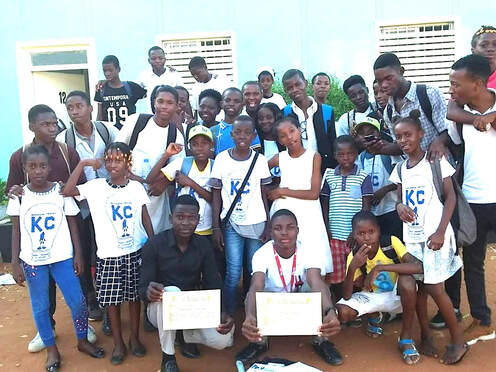 The Academy of Kandendgue Scientists is a technology-based start-up that empowers children and adults from 5 to 25 years of age, instilling the seed of inventive and technological skills from an early age. Enabling children to discover their own potential helps them to avoid bad practices, such as drugs, prostitution and delinquency, and envisages a society that is technologically well prepared for future challenges, and perhaps even a renewed Africa. Formed in 2017 by Professor and Inventor Pedro Paris (telecommunications technician) and Aeronautical Engineer Marco Romero, the project aims to provide more opportunities for children and young people without access to education. In 2012, an ordinary residence in Viana in the province of Luanda was transformed into a laboratory, an explanatory and preparatory centre, and 5 years later the idea was born to include children who lacked the opportunity to access education, but who, like others, had the enormous potential to become “Kandengue Scientists”. The Academy already has the involvement of around 80 Kandengues aged from 6 to 30 years, of which 30 are now tutors with more than 5 years of experience, having been trained by Professor Pedro Paris. KANDENGUE VISION: To transform children and adults from Angola, Africa and the World into budding scientists and professional IT technicians, so they can provide solutions to the problems of their community and country. KANDENGUE MISSION: To bring sustainable technologies to the neediest communities, occupying the spare time of children and adults with art, education and sustainable technology. KANDENGUE VALUES: Discipline, Love, Patriotism In recent years, more than 976 children and adults from private and public schools, and foster homes throughout the nation have learned the basics of electronics, robotics, programming, game development, applications, aeronautics and space technology, thanks to the “Kandengue Scientists”. Changes in the lives of many families can already be felt, having received the tools and knowledge needed to put bread on their tables, having access to schools and universities, and solving community problems. The financial and logistical difficulties for ensuring better conditions for the children in the development of educational activities are initially resolved by the tutors, who create teaching methods and materials tailored to existing conditions, for example, reusing electronic waste for e-learning and the creation of decorative and visual arts. Partnerships with public entities have already taken place in 2019 and 2020, such as with the network of Angolan media libraries, Ministry of Telecommunications and Information Technologies (MTTI), National Technology Centre, Ministry of Higher Education, Science, Technology and Innovation (MESCTI), BusCenter, Unitel, Methodist University of Angola, and the Seaka Center (Angolan Spiritualist Society Allan Kardec), in which the academy made available 10 professors to help the institution with a lack of teaching staff. Some of our KEY SUSTAINABILITY INITIATIVES are:
And below are just some of the ideas and projects the Kandengue Scientists have been developing:
“innovations arise from simple ideas that fully resolve the observed problem” If you would like to know more about the Kandengue Scientists and the wonderful work they do in Angola, do get in touch with Marco Romero at - [email protected] The InnovaSpace team in the last years have been involved on a couple of occasions with the innovative activities of Guerilla Science, as they seek to connect the general public with science in new and interesting ways. The benefits of yoga on Earth are well known, and it is certainly an activity that would improve the health of anyone practicing it regularly. The Guerilla crew have come up with a series of great videos linking dynamic yoga stretches with the effects of microgravity on the human body and mind, assisted by five expert space scientists, one of which is InnovaSpace's very own Space Life Sciences Expert Dr. Lucas Rehnberg, who explains about Space Walks and the problems astronauts face when conducting maintenance tasks on the outside of the International Space Station. Get out your yoga mats, exercise your body, and stretch your mind learning fascinating facts about the human body in space! 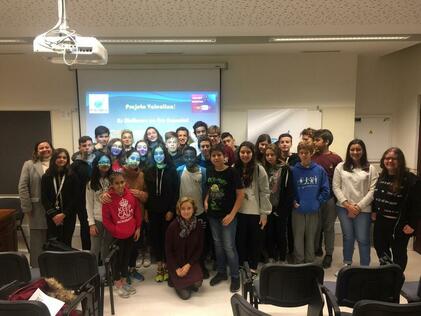
Em janeiro deste ano, a InnovaSpace teve a oportunidade de cativar a atenção de um grupo de estudantes, de 12-14 anos de idade, com apresentações sobre carreiras de cientistas espaciais.
Estudantes da Escola Rainha Dona Amélia, em Lisboa, reuniram-se no auditório junto com a Profa. Berta Ferreira, para aprender mais sobre o papel das mulheres na Era Espacial.
Com os olhos bem atentos, os jovens alunos sentaram-se para assistir à apresentação do Projeto Valentina, a qual começou com uma entusiasmada palestra da Dra. Michele Rosa, que falou sobre seu caminho profissional e científico até se tornar uma pesquisadora da área espacial, juntamente com o trabalho que ela hoje desempenha na posição de Coordenadora da InnovaSpace Portuguese Hub.
Authors: Kids from the STEP Computer AcademyAnd InnovaSpace Admin Director - Mary Upritchard 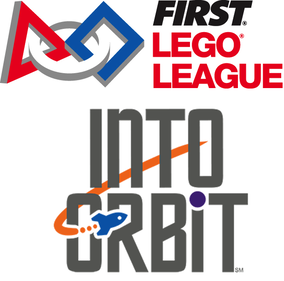 Over the last few months, InnovaSpace's very own space doctor, Thais Russomano, has been listening to some of the First Lego League tournament teams talking about the projects they have developed for this year’s Into Orbit mission, answering their questions and giving some tips as to areas they might also consider. The annual competition has teams taking part from all over the world (92 different countries this year), adopting a different theme each time linked to robotics and the STEM areas, and aimed at encouraging young students to improve critical thinking and team-building skills, stimulating their creativity and giving the opportunity to present their projects in public in front of judges. As part of this year’s competition, students have been thinking about ways to improve the life, health and wellbeing of astronauts in space, with some really constructive and original ideas being contemplated by these bright young minds. We were approached by teams from the STEP Computer Academy in Seattle USA a little while back, with great questions they had about their projects. With Thais having given them some feedback, we were delighted to hear recently that 3 of the 5 Into Orbit teams from the academy had made it through to the semi-finals of their national competition, and we are even more delighted now to be able to present three short texts from those teams: Mary UpritchardInnovaSpace Admin Director With another year now drawn to a close, I thought it would be interesting to look back on the two very successful InnovaSpace Kids2Mars events that took place in 2018 involving questions asked by children to crew members of Mars analogue missions, one with the MDRS Crew 185 in the Utah desert and the other with the Austrian Space Forum’s AMADEE-18 mission in the Dhofar desert in Oman. In summary, 53 children from 33 different countries from around the world had the opportunity to ask anything they wanted about travelling to and life on Mars, and very interesting answers came back from analogue astronauts and crew members who spent their time isolated in desert regions, especially chosen for their similarities to the planet Mars. Analogue astronauts on this type of mission in general have little spare time, as they are involved in many research activities, so we knew we could not bombard them with a mountain of questions. This in fact also linked well with our aims for the Kids2Mars project, which was to involve children from as many different countries as possible – quantity of countries rather than quantity of questions. With our tagline of Space Without Borders, this aspect was of prime importance, so an end result of 33 countries was very satisfying, especially so considering the diverse range of nations involved, such as Bolivia, Bulgaria, Iceland, Mongolia and Nepal. In fact, we had questions coming from countries in 6 of the 7 continents, just missing out on Antarctica, which for obvious reasons is a little more difficult! It was interesting to hear how the name of the planet Mars, named after the Roman god of war, was pronounced in the various languages. Certainly, the sound of the word was the same or very similar to the English pronunciation in the majority of cases, however, there were a few exceptions, such as from China, Japan, Nepal, Libya and Indian Tamil. We have extracted the word Mars, where mentioned, from all of the children’s questions and with the invaluable help of our two collaborators from Italy, Fabio Pinna and Mario Mollo, created a short video – we hope you like it! One thing that has become obvious from all the Kids2Mars activities we have conducted is how much the subject of space and space travel arouses curiosity, and how much the young people involved in the lectures and creative pursuits have done so with great enthusiasm and interest. In our view, this is exactly why outreach activities linked to Mars or the Moon or astronauts, in fact anything involving space, can be used as a tool to capture the attention and interest of children, motivating them to give more consideration to the STEM areas of education. Although the adults of today are laying and securing the foundations of human life in space, it is our children who will build on this to become the Space Generation, and perhaps in time, even future Mars colonisers!
|
Welcometo the InnovaSpace Knowledge Station Categories
All
|
UK Office: 88 Tideslea Path, London, SE280LZ
Privacy Policy I Terms & Conditions
© 2024 InnovaSpace, All Rights Reserved

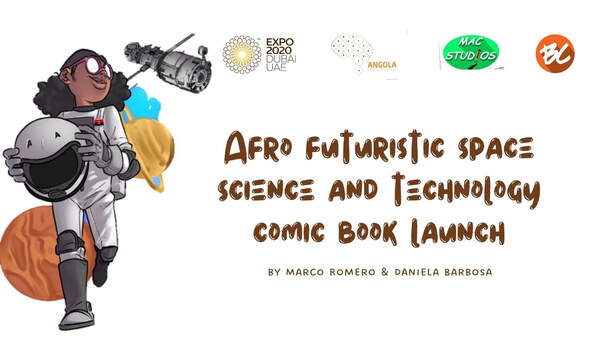
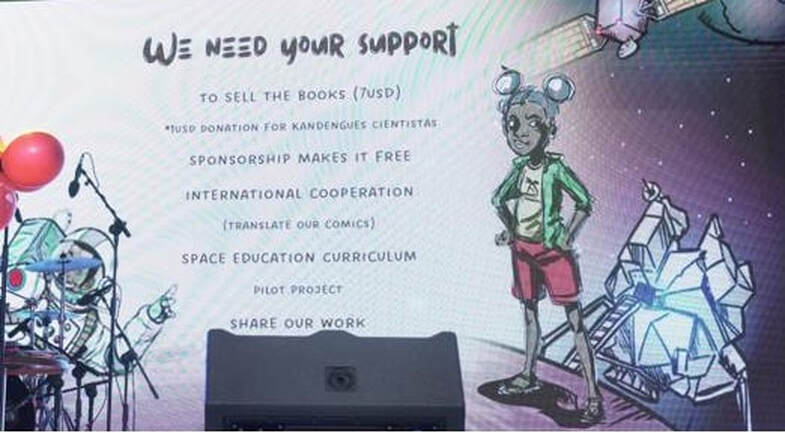
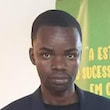
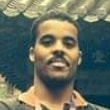
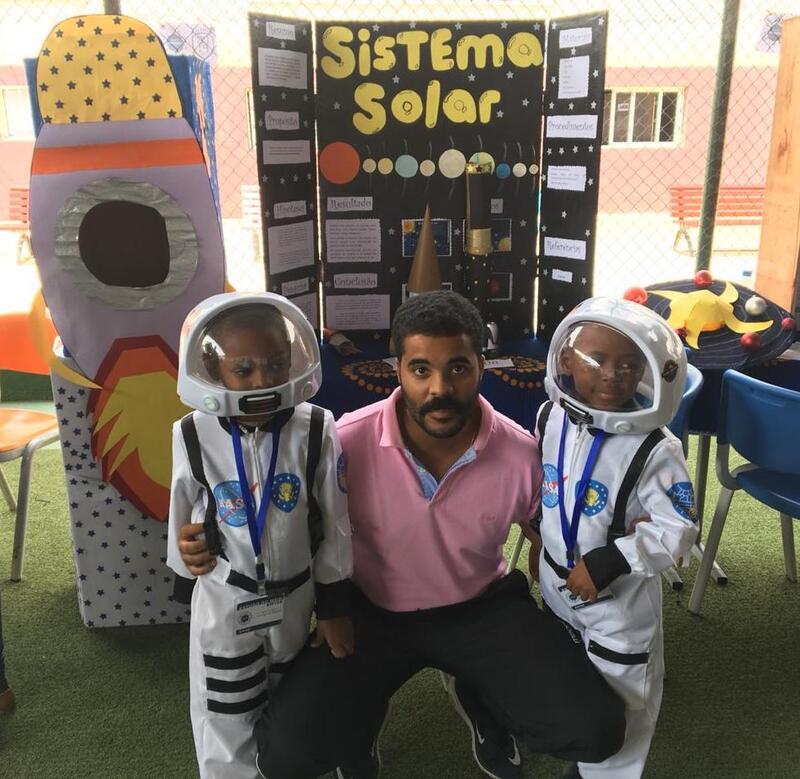
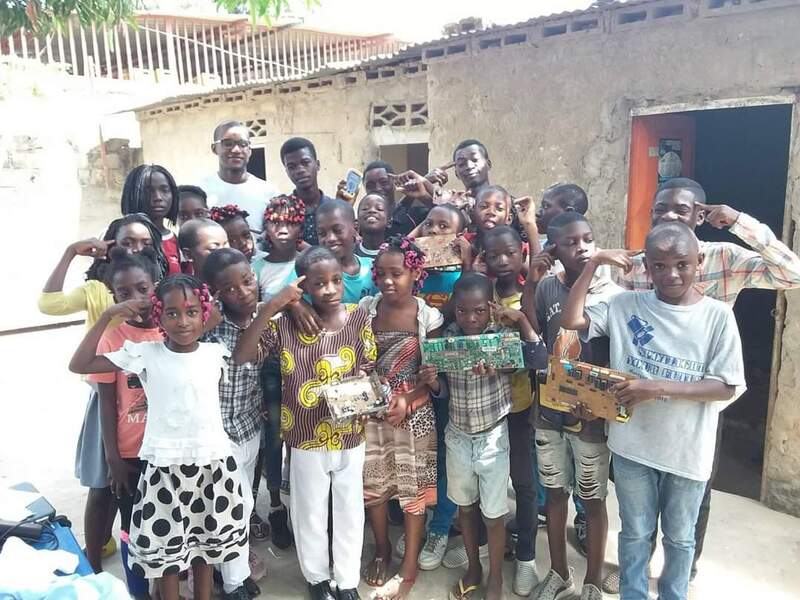


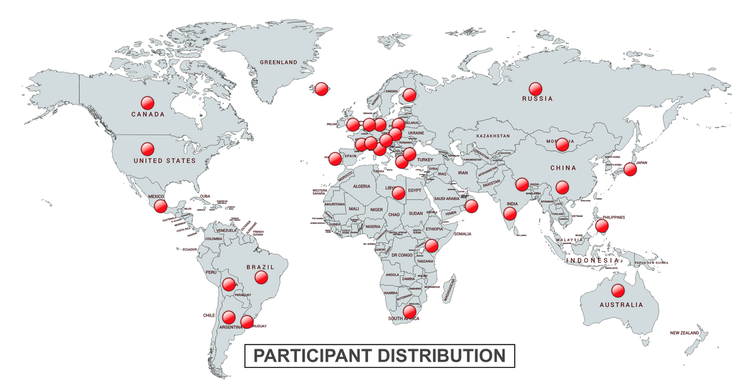
 RSS Feed
RSS Feed